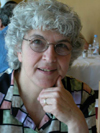Epilogue
As I finished the writing of this book, I left my desk and boarded
the bus 19, heading toward Paris Square. By chance, I found the same driver behind
the wheel who had badgered me throughout the years of the vigil. He smiled at
me. Nothing more, no acknowledgment, certainly no apologies. Just a superficial smile of I’m okay, you’re okay. Stam
yom shel hol, as we say in Hebrew: just a regular sort of day.
And it was regular. One
of those dreary, drizzly Jerusalem days, not unlike the hundreds that I had spent on the vigil during the winter months. By chance, I had to get off the bus near Paris Square, this time for a memorial service
for Father Bruno, founder of the Neve Shalom village in Israel, the only community in Israel where Arabs and Jews live in
as close to an egalitarian spirit as you find in this part of the world. Father
Bruno had devoted his long life to peace.
I got off the bus and walked toward the plaza keeping my eyes on
it, as if I expected a solid ring of women dressed in black to materialize before my eyes.
I remember how we would look when approached from a distance – serious, intense, powerful, the conscience of
the people. There was no one there today.
Just the rain drizzling down into puddles on the pavement.
Instead of heading directly to the prayer service, I crossed the
street and entered the plaza. The municipal authorities had redone it entirely,
no doubt in an attempt to prevent its future use for new political demonstrations. The
stone wall that had once encircled it was torn down, replaced by a taller wall, harder to mount and with wide gaps in it. The garden that the women had so carefully avoided trampling was now protected by
iron fencing, and short stubby plants now grew where irises and pansies had once fluttered.
Most significantly, the focus of the plaza had now shifted inward. Tiers
of concrete steps coaxed visitors to sit within the plaza, talking to each other, rather than stand upon it, addressing the
world at large.
For almost a decade of Israeli political history, Women in Black
continue to make its silent statement from this location. At first, the only
people who heard us were the crazies who responded with a loony dialogue of sex and threats, then we talked to the pedestrians
and passersby, and finally we talked to the world at large, who moved along our message to the politicians. Some women say that the most important part of the talking was to our children, to our students, to our
friends, even to ourselves. Yes, that was a very important part of what the vigil
was all about – educating ourselves and those close to us about the yearning in our heart for peace. But that’s typical female self-effacement, I soon remember.
We did more than just kick up a fuss among ourselves. We were also inspiring
to the world at large, part of a noble line of peace leaders, a dynasty that leads from Ghandi through Martin Luther King
through the Mothers of the Plaza de Mayo. And that continues through the Women
in Black of former Yugoslavia and India and the Philippines and China.
Women in Black were an important part of the protest movement that
is engaged in a long process of bringing peace to the Middle East. We came too
late for the many Israelis and Palestinians who are buried in this earth and whose families will never cease to mourn them. And for the many who bear the terrible scars of the wars, the riots, and the terrorism. But we have come just in time for those who are alive today, and just in time for
the generations who come after us. And even if we have some setbacks on the way
to a perfect peace, and even if the imperfect peace that is still being fashioned brings disappointment and discouragement,
we know that there is always a way back from the path of conflict. Women in Black
is not the only way. But, for many of us who did it, and many of us who watched
from a distance, this is a memory that continues to inspire.

